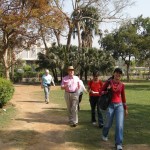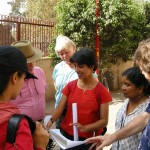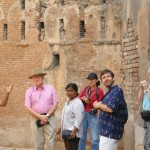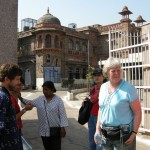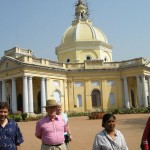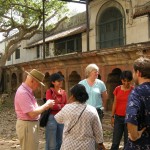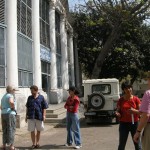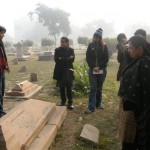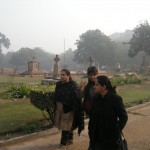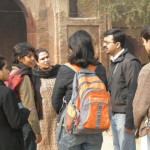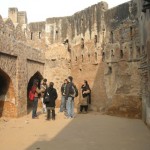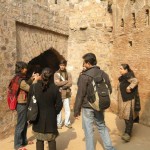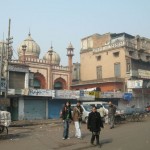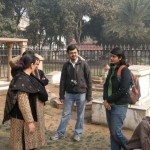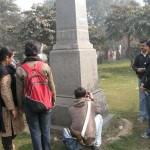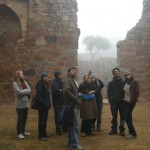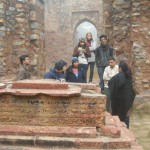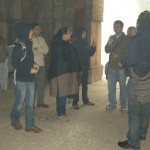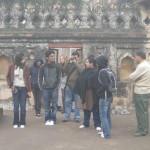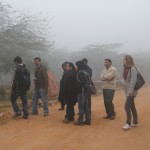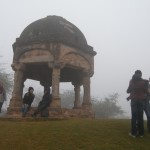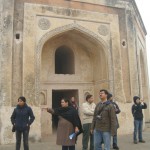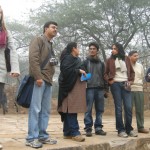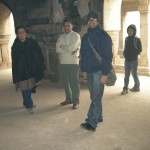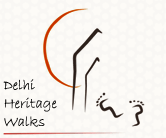Posts Tagged ‘heritage trail’
February 16, 2010 in Delhi Heritage Walks,DHW,Heritage Walks,Mehrauli Archaeological Park,Mehrauli Archaeological Park Heritage Walks | Comments (1)
-
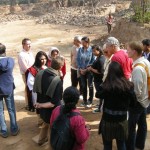
-
recent excavations, Mehrauli Archaeological Park Heritage walk
-
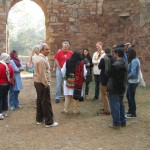
-
balban’s tomb, Mehrauli Archaeological Park Heritage walk
-
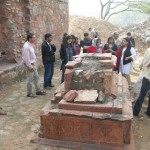
-
khan shaheed’s grave, Mehrauli Archaeological Park Heritage walk
-
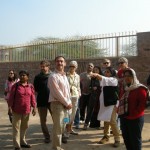
-
jamali kamali mosque, Mehrauli Archaeological Park Heritage walk
-
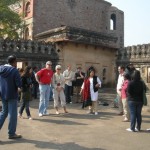
-
jamali’s tomb complex, Mehrauli Archaeological Park Heritage walk
-
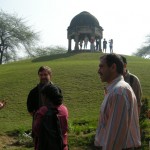
-
Metcalfe’s folly, Mehrauli Archaeological Park Heritage walk
-
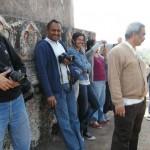
-
at dilkhusha, Mehrauli Archaeological Park Heritage walk
-
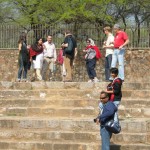
-
Mehrauli Archaeological Park Heritage walk
-
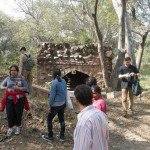
-
Mehrauli Archaeological Park Heritage walk
Today’s weather was perfect…bright, breezy and pleasantly cool. 18 heritage enthusiasts joined me along with Kanika Singh and Rajesh Ranjan for the heritage walk in Mehrauli Archaeological Park. Situated on the Aravallis, this is perhaps earliest inhabited area of Delhi. This heritage trail is vast and very interesting: it covers monuments and structures from 13th century to 19th century. We started our walk from an arched gate that leads to Balban’s tomb. It is here that ASI carried out some excavation work in summer of 2009 and found some rooms, graves which seems to be part of the larger residential complex..today again we saw labour working on the site…let us see what more may come out of it. Adjacent to Balban’s tomb is Khan Shaheed’s grave, son of Balban who died fighting the Mongols in 1285A.D. This chamber has some some remains of floral designs on plaster and little bit of blue tile on one of the walls. We can visualise how magnificent it would have been at the time of its construction. Continue Reading This Post
in Delhi Heritage Walks,DHW,Heritage Walks,Lodi Garden,Lodi Garden Heritage Walks | Comments (0)
-
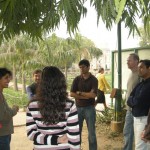
-
Lodi garden heritage walk
-
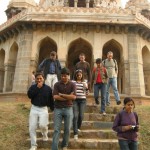
-
Lodi garden heritage walk
-
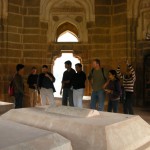
-
Lodi garden heritage walk
-
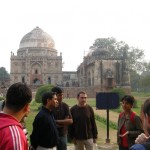
-
bada gumbad complex, Lodi garden heritage walk
-
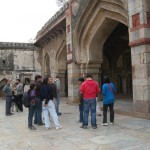
-
lodi period mosque, Lodi garden heritage walk
-
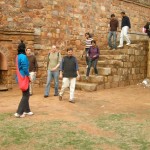
-
steps to Sikander Lodis tomb, Lodi garden heritage walk
A perfect Saturday evening in Lodi garden, we began the walk from gate no. 1 of the park walking towards Mohammad Shah Sayyid’s tomb. The tomb is now fully restored, all thanks to the preparations for the Commonwealth games this winter. This is the only Sayyid building in Lodi garden. Historians often club Sayyid and Lodi reigns together; as a result people often are not aware of Sayyids ruling in north India. The next stop was the Bada Gumbad with its beautiful Lodi period mosque. The plaster decoration is exquisite and covers almost every surface of the mosque. Right opposite is the Shish Gumbad, a square, Lodi period tomb. We then walked towards Sikander Lodi’s tomb. True to his name, Sikander Lodi is known for his military exploits and his tomb resembles a mini-fortress. Walking around the athpula, the 16th century bridge, we reached some late-Mughal monuments, a mosque and a garden pavilion. We finished the walk near a 14th century turret. It was probably part of an enclosure wall which no longer exists. This is probably the earliest surviving ruin in the Lodi garden.
(posted by Rajesh Ranjan & Kanika Singh, team members, Delhi Heritage Walks)
Lodi Garden Heritage Walk
January 28, 2010 in 1857,Delhi Heritage Walks,DHW,Heritage Walks,Kashmiri Gate,Kashmiri Gate Heritage Walks | Comments (0)
This heritage trail covers sites associated with late-Mughal period and landmarks of the uprising of 1857. We began at Nicholson’s cemetery and spent some time sauntering around, looking at the interesting gravestones. Some are indeed beautifully carved. Besides Brigadier Gen. Nicholson’s, the cemetery also has Master Ramachandra’s grave. He is one of the most well known scholars associated with the Delhi College which is presently the Zakir Hussain College in Delhi University. Kashmiri gate, one of the most important landmarks of 1857 in Delhi, is easily missed by people in its neighbourhood. The area also has some city walls, parts of which are still visible around the ISBT. We passed the Lal Masjid, old Hindu college and old Stephen’s college while walking through the Bara bazaar in Kashmiri gate. The mass was over at St. James’ Church but the caretakers quite willingly reopened the church for us. There are several plaques on the church building naming martyrs of 1857. The churchyard also has graves of William Fraser, James Skinner and Skinner’s family burial ground. Next stop was the Dara Shikoh’s library and British Residency in the Indraprastha University campus. Just outside the campus is the telegraph memorial and remains of British magazine. Next to the GPO is Lothian Road cemetery which was closed. The view through the iron gates of the cemetery presented a picture of utter neglect. It is the earliest British cemetery in Delhi, and is presently in a very bad shape.
(posted by Rajesh Ranjan & Kanika Singh, team members, Delhi Heritage Walks)
1857 Uprising: Kashmiri Gate Heritage Walk
« Newer Posts
